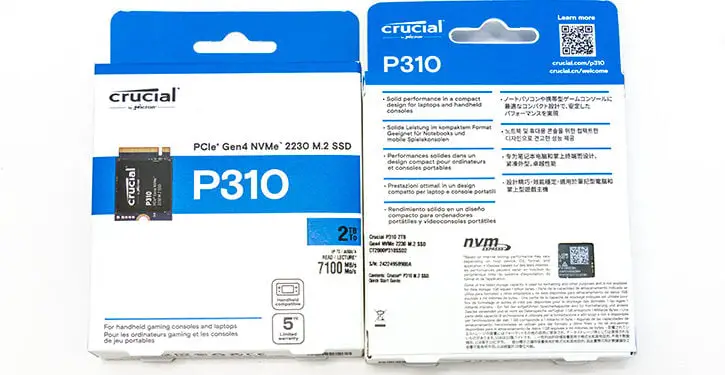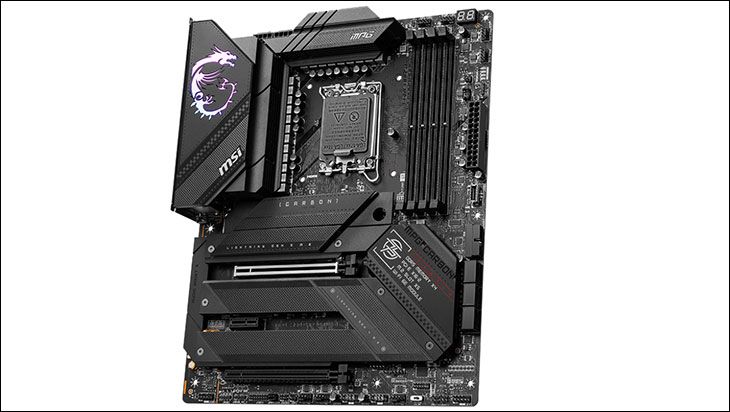Performance: 34 out of 40
We have to ensure that people do not get confused when we say the P310 offers very good bordering on excellent performance. It does. Relative to what one could expect from its form-factor. A cheaper T500 2TB will outperform it. Even a 1TB T500 will. The P310 simply brings the lagging ‘P’ series into the realm of reasonable for the year of our lord 2024. Nothing more. Nothing less. So do not get it twisted and think this modern PCIe 4, NVMe 1.4 2230 can outperform a similarly priced PCIe 4 NVMe 1.4 2280… let alone compete against a similarly priced PCIe 5.0 NVMe 2.0 M.2 2280. It can’t. Especially when most of those bigger drive will be rocking modern TLC NAND and not modern QLC NAND.
Technological Innovation: 18 out of 20
Is this the first 2230 to use the E27t controller? No. A couple others including PHISON themselves have done it. It however is the first E27t + QLC NAND 2230 that does not out and out suck…eggs. Instead, the P310 2TB variant is extremely good at the task it was designed to do: offer PCIe 4.0 bottlenecking levels of read, and darn near PCIe 4.0 bottlenecking write performance, in a tiny package that veritably sips power. Now if it only had used the TLC variant and not QLC variant and we would be fully satisfied.
Build Quality & Warranty: 15 out of 20
There is not much to complain about here – beyond the NAND – as this is a very competently designed drive with as much care taken to ensure real world performance is top notch and stays top notch. With that said… there is only so much one can do with QLC NAND. You can not make a silk purse from a sow’s ear. So while Crucial has come close, at the end of the day the build quality rating is lowered because of the known fragility, and native performance, of QLC NAND. Even the best QLC NAND we have seen is no exception from this hard and fast rule.
Value: 17 out of 20
As with performance rating, it is all relative. Yes, one can get a lot more bang for their buck opting for a modern M.2 using the standard 2280 formfactor. Good luck fitting even a 2242 SSD into a slot meant for 22x30mm drives. That is the crux of the value issue with this nearly 11 cents per GB SSD. It is insanely fast for its class. Hell its downright overkill for 99 percent of the devices that can only accommodate 2230 M.2 drives. Its just that outside of its niche the performance vs. price disparity become so prevalent as to make it one of the worst value P modes Crucial has ever offered. That is the downside to specialization and razor sharp optimization… as you lose flexibility as you gain in whatever category you have optimized for. As such you can either consider this a 17 out of 20 (as we have nuked 3 full points for the use of QLC)… or you can consider it a 7 out of 20. It really will just depend on your point of view.
Final Score: 84 out of 100
The P310 is easily the most task optimized SSD Crucial has released to date. The upside to this laser like focus is this is one of the better 2230s available today… and it still is the best P series SSD Crucial has released. The downside is the reduction is broad ‘mass’ appeal. For most outside of those who need a 2230 formfactor drive there are veritable ton of better, cheaper, faster options. As such the P310 2TB is the very epitome of the Chinese saying about Dragon Tears. You will either find the P310 to be one sweeeeet deal that offers insane levels of overkill, or you will find it so bitter as to be unpalatable. It really will all come down to precisely what need(s) you are trying to satisfy. Make no mistake if you do want a drive that will rock a Steam Deck / RoG Ally / Rassberry Pi… even entry level NUC’s world the P310 2TB is a very good to great option. It is only when you try and fit it into a more… reasonable sized computing device does its limitations come to the foreground. So chose wisely.










